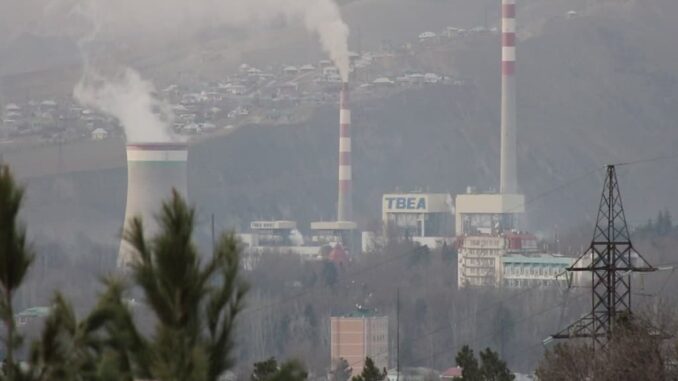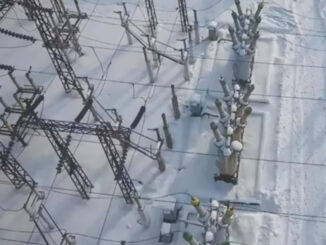
Notwithstanding the Texas Legislature’s just-passed measures to prevent brownouts, the Electric Reliability Council of Texas says they could happen this summer before the new legislation takes effect.
State Rep. Brooks Landgraf, Sen. Kevin Sparks and a utility company official from Plano say it’s an uncomfortable situation.
“I’m disappointed by the forecast presented in the ERCOT report which indicates a potential strain on our power grid and the threat of brownouts this summer,” said Landgraf, an Odessa Republican.
“I remain committed to working closely with state leaders, the Public Utility Commission and ERCOT in order to minimize the threat of brownouts and ensure that our state’s power grid is prepared to meet the demands of summer.”
Landgraf said the ERCOT warning provided more evidence of the long-term need to harness Texas’ abundant natural gas resources and guarantee a reliable power supply for the entire state.
“Texas has long been an energy production leader and our state’s abundant natural gas resources, especially those in the Permian Basin, must play their appropriate role in meeting our energy needs,” he said.
“That’s why during the recent regular session I filed a bill to incentivize the construction of new dispatchable natural gas generation facilities and I successfully fought to include provisions of that bill in other legislation that ultimately became law.
“It took decades to create the problems we are currently facing with the grid, so it can’t all get fixed overnight,” Landgraf said.
“But I find great encouragement in the actions taken by the Texas House to tackle this issue head on.
“By prioritizing the development and utilization of dispatchable natural gas energy we will reinforce the grid’s reliability during extreme weather events and we will continue to provide affordable electricity to our fellow Texans.
“Planned brownouts and unplanned blackouts should not be part of life in an energy hub like Texas.”
A brownout is a reduction in or restriction on the availability of electrical power in a particular area.
Sparks, a Midland Republican, said the Legislature in Austin “took steps in the right direction to secure the reliability of our electrical grid this session, but we may not be prepared for the load demand that the high temperatures of this summer will bring due to the time needed to implement the legislation that was just signed into law.
“More than 20 years of federally subsidized intermittent power generation continues to leave our grid vulnerable to extreme weather events,” he said. “However, as a result of the Legislature’s work our grid will be primed for future growth and stability through the encouragement and development of reliable dispatchable power.”
Citing the passage of Senate Bills 1929, 2627 and 2013, Sparks said the PUC and ERCOT will soon have better tools to manage certain kinds of the large and flexible electric loads that come onto the grid.
“SB 2627 provides low interest loans for the construction of up to 10,000 megawatts of new dispatchable power generation and it provides completion bonuses to incentivize new dispatchable generation that is built as quickly as possible,” he said.
“SB 2013 protects the Texas electric grid from hostile foreign agents and actors. The implementation of these bills will be gradual, though, and thus brownouts this summer are still a possibility.”
Jason Thomas, co-founder of and partner in the Plano-based Vault Energy Solutions Co., told the Odessa American that the state since 2008 “has been riding a wave of exponential population growth.
“The Lone Star State has seen its population expand by a staggering 24 percent,” he said. “But with such rapid growth comes an increased demand for resources, most notably energy.
“The state’s dispatchable power supply, the backup when all other sources max out, has seen a meager 1.5 percent growth during the same period. This disparity poses a potential challenge to the state’s energy security, especially during peak demand times.”
Thomas said Texas’ power portfolio is mostly fueled by coal, natural gas and nuclear energy.
“Under normal conditions this triad provides a stable and reliable electricity supply,” he said. “When routine demand surpasses the capacity of these primary sources, Texas turns to its secondary heroes, renewable sources like wind and solar power.
“Yet even renewable sources have their limitations. When both the primary and renewable supplies are running at full capacity, the state falls back on its dispatchable power supply.”
Thomas said peaker plants can quickly ramp up and supply energy for short periods, usually from one to three hours.
“The tricky part comes during the summer months when the evening hours put the grid to the ultimate test,” he said. “As the sun sets between 8:30-9 p.m., temperatures often linger above 100 degrees.
“Solar power, inherently reliant on sunlight, ceases to be a viable option. Wind energy, too, begins to wane as the heating of the earth’s surface lessens and wind generation decreases.”
Thomas said the good news is that ERCOT says the grid is now well-equipped to distribute power across the state.
“The crux of the issue, however, is not about distribution but availability,” he said. “The real risk lies in the potential shortage of electrical supply, particularly during those scorching summer evenings.”
Thomas said a natural gas-fired peaker plant is under construction at Maxwell, 40 miles south of Austin, that will be operational in 2025, generating 190 megawatts or enough to power 38,000 homes.
“Yet with a population surge of over 470,000 in 2022 alone, one wonders if the state’s power infrastructure can keep up with this growing demand,” he said. “The great Texas energy saga continues as the state grapples with finding a balance between its booming population and its power supply capabilities.
“As we look toward the future it’s clear that strategic planning and forward-thinking energy solutions will be key to ensuring that the lights stay on in Texas.”
Source:



